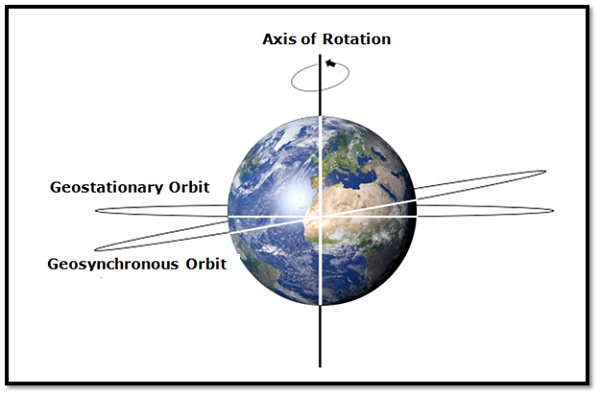
 Data Structure
Data Structure Networking
Networking RDBMS
RDBMS Operating System
Operating System Java
Java MS Excel
MS Excel iOS
iOS HTML
HTML CSS
CSS Android
Android Python
Python C Programming
C Programming C++
C++ C#
C# MongoDB
MongoDB MySQL
MySQL Javascript
Javascript PHP
PHP
- Selected Reading
- UPSC IAS Exams Notes
- Developer's Best Practices
- Questions and Answers
- Effective Resume Writing
- HR Interview Questions
- Computer Glossary
- Who is Who
Geosynchronous and Geostationary Satellites
Geosynchronous Satellite and Geosynchronous Orbit (GSO)
A geosynchronous satellite is a communication satellite that has an orbital period same as the period of rotation of the earth. Hence, it appears to be permanently in the same area of the sky at a particular time each day when viewed by an observer on the earth.
The orbit in which a geosynchronous satellite is placed is called geosynchronous orbit (GSO). Its orbital period is the sidereal day, i.e. 23 hours 56 minutes 4 seconds and its orbital altitude is 35,800 km.
Geostationary Satellite and Geostationary Orbit (GEO)
A circular geosynchronous satellite which is placed at 0o angle to the equatorial plane is called a geostationary satellite. It appears to be stationary at a fixed position of the sky throughout the day by a ground observer.
The orbit in which a geostationary satellite is placed is called a geostationary orbit (GEO). It is placed 35, 800 km above the earth’s equator and has an orbital period equal to the sidereal day.

Uses and Examples of Geosynchronous Satellites
Uses
- Voice and data communication
- Internet
- Broadcasting cable TV and radio signals
Examples
- Raduga 29 of Russia
- Astra 1C of India
- MEASAT 2 of Malaysia
Uses and Examples of Geostationary Satellites
Uses
- Weather reports about a particular region
- Weather forecasting
- Terrestrial reports of a geographical area
- Spy networks
Examples
- Geostationary Operational Environmental Satellite (GEOS) of USA
- INSAT of India
- Himawari of Japan
- Fengyun of China
- Meteostat of Europe

